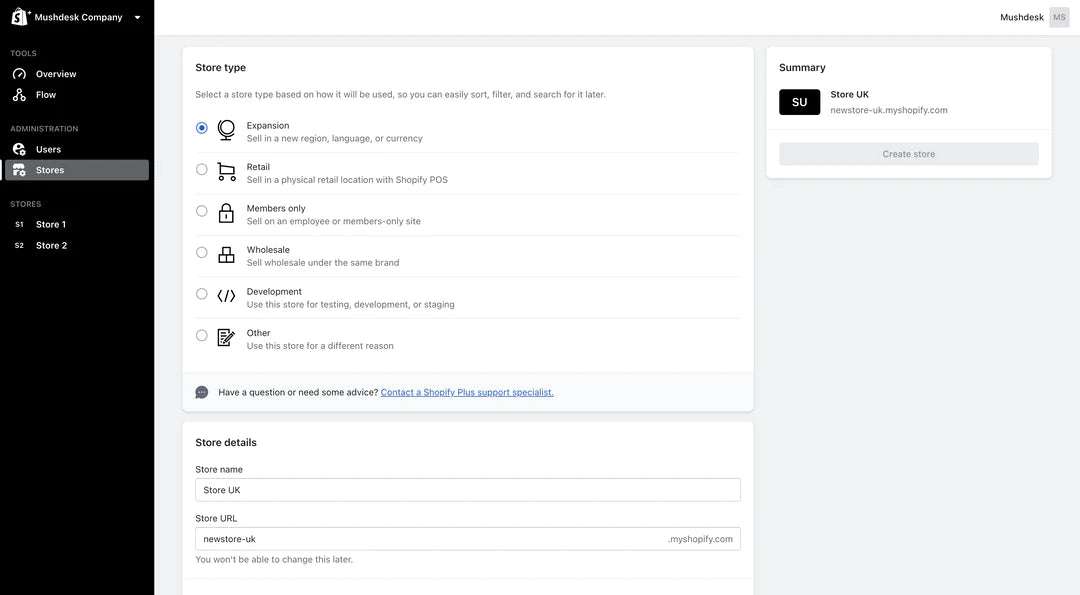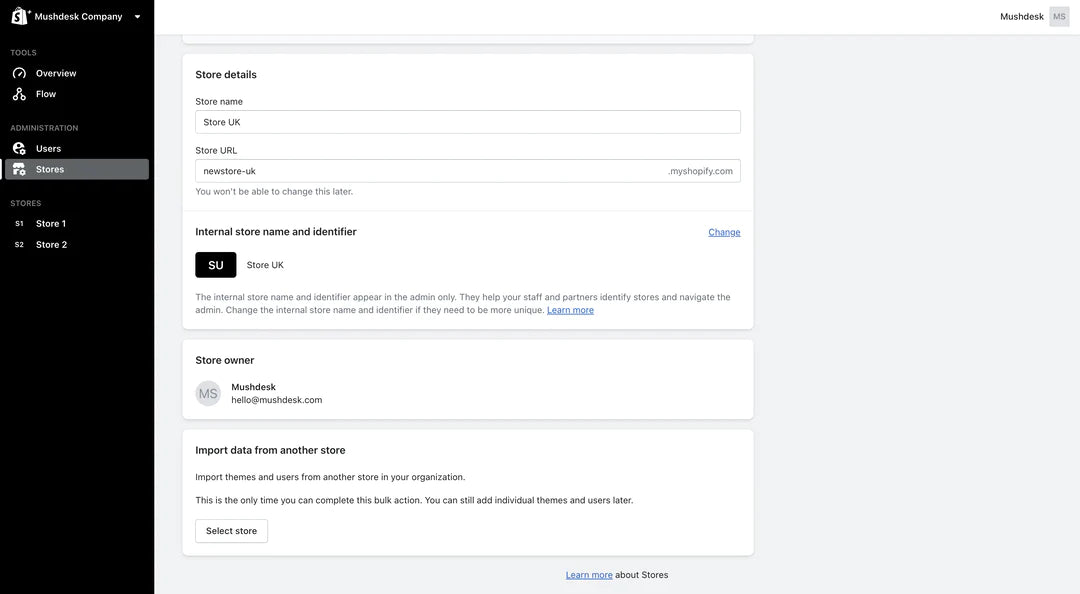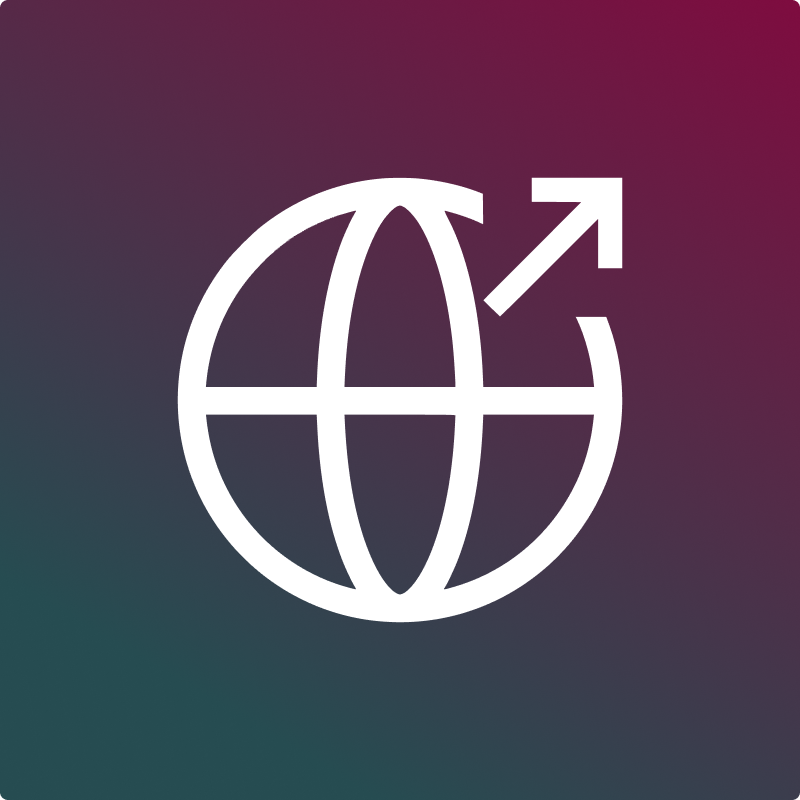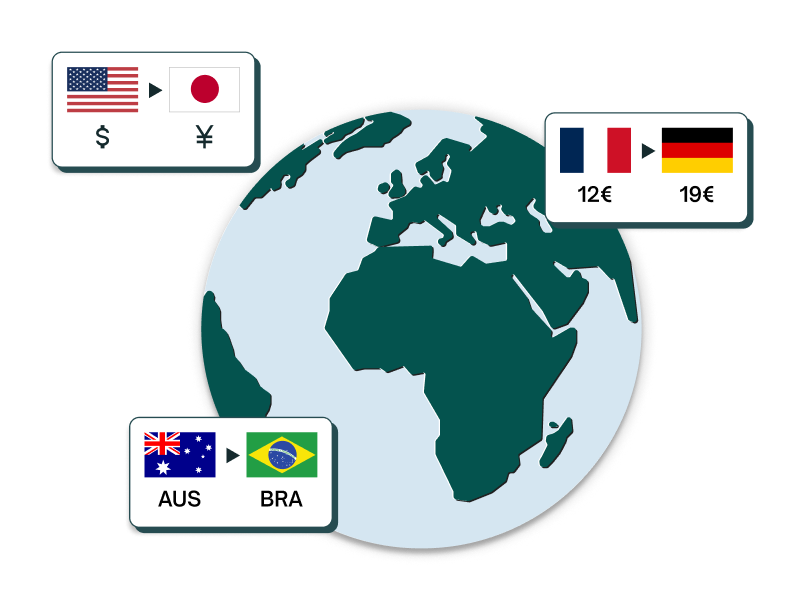Shopify Expansion Stores: The Ultimate Guide for Success
Discover insider tips for success with Shopify Plus expansion stores in this ultimate guide. Learn how to launch and scale your business, and drive sales with expert advice. Achieve e-commerce success with Shopify Plus!

Discover insider tips for success with Shopify Plus expansion stores in this ultimate guide. Learn how to launch and scale your business, and drive sales with expert advice. Achieve e-commerce success with Shopify Plus!
With Shopify Plus, you can create up to 9 stores besides your main one. This is probably the best tool to make your business grow effectively. But it’s just not opening new stores. There are a lot of aspects to consider besides all the details that can fail and eventually ruin your expanding process.
So check this useful information, and make sure that you’re taking the right steps to success.
Let’s go for it!
What is an Expansion store on Shopify Plus?
Before going any further, you might want to know better what we’re talking about.
An expansion store is an additional store that you can create under your Shopify Plus account. The store will operate separately from your main one, and it can have its own domain name, branding, and products.
It’s one of the best ways to expand your business into new markets with a personalized experience.
In the next section, you will learn how to create and manage your expansion stores effectively.
How to own multiple expansion stores
Once you have a clear idea of an expansion store, it is time to create it.
With your Shopify Plus account, go to the “Shopify Plus Global Nav” section and click “Create Store”, to configure and customize your store.

That means selecting “Expansion” as the store type and adding the store name and platform domain.

Then, import data from another store, considering the theme and users you want to have in the new Expansion store.

Now that you have already created your new store (or stores), you might face some challenges.
Let’s see those problems and how to deal with them:
1. Geolocation
It’s so easy to lose all the effort and money that is required to create your new store.
Imagine that you’ve created a personalized experience for a specific market, but your new users don’t get redirected to that store. That potential client will not have a good experience and will end up leaving the store, and you will lose a sale.
This is one of the biggest issues you have to address, and the best way to do it is with the help of Orbe.

Orbe is a Shopify app that will connect all your Expansion Stores. It will synchronize automatically with your Shopify Markets configuration, recommending the right experience to your users depending on their IP address. It also respects data protection laws and has SEO features that will make your online positioning more effective.
Try the app for free in the Shopify App Store.
2. Selling cross-border
When you expand your business worldwide, managing logistics across different regions can be hard, so you will need help to make this process easier.
Global-e is a platform that you have to consider for this. They offer a range of tools that will make end-to-end Operations much easier, covering all your international logistics and dealing with Regulations and Import Procedures. This is helpful if you sell in many markets and don’t have local teams.
You can contact them through their web.
3. Coordination
Owning multiple expansion stores on Shopify Plus requires a lot of coordination for things like post-purchased operations, inventory synchronization, and customer support.
The more stores, the harder it gets, so let’s see how to handle each one with the help of some Shopify Apps.
Post-Purchased Operations
Return Go is the best one for this matter. The app will allow you to manage the refunds of all your stores and simplify product exchanges, gift returns, and order cancellations.
You can also customize your return and exchange policy rules, eligibility conditions, resolutions, and return reasons.
Inventory Synchronization
You will probably have specific products for each market, but some of them will be the same in all your stores, and the more stores you have, the more products you have to synchronize.
The app Multistore Sync will help manage product availability, automatically updating your inventory in all your stores and locations when there is a new order, refund, cancellation, or restock.
See more of it in the Shopify App Store
Customer Support
As we said before, if you have more than one store, everything gets more complicated, and one of those things is customer support.
One way to solve this is with Gorgias. This app will help you unify all support conversations, centralizing every order, every conversation, and even every social media comment and DM, all in one customer ticket view.
You can also view, edit, and cancel Shopify orders without leaving the Gorgias customer view and provide instant answers.
You can get more info on their website.
FAQ
Now, you probably have some crucial questions about efficiently managing Shopify Plus Expansion stores. Let’s answer them.
Yes, you can use Shopify Markets or Shopify Markets Pro in different Expansion Stores if Markets is available in the primary country of the Expansion Store. In this scenario, you need to know that Shopify Markets will only work in the countries that support Shopify Payments. You can check the list here.
However, If you have Expansions Stores is not recommended to have the same country in different stores since you only plan to ship to one country from one store.
Apps like Orbe can help you with that. As we said before, it will synchronize your Expansion Stores with your Shopify Markets configuration and redirect your customers to the correct shopping experience based on their IP address.
For example, let’s say you have one store for Europe, one for the USA, and another for Australia. It doesn’t make sense that France is available in the Markets of the three Expansion Stores.
Orbe will solve this and always redirect your French customers to the European Store.
You can view all your store's data and insights on the built-in analytics dashboard in your Shopify Admin. You will find this dashboard for each store you manage.
If you are the Store Owner or a staff member with the necessary permissions, you can also access a limited report of your multiple Expansion Stores through the Shopify Plus Global Nav developer preview. This report provides a summary of total sales and orders for all stores, along with individual panels for each store showing metrics such as total sales, number of sessions, number of orders, average order value, and conversion rate.
For more detailed insights, click "View Dashboard" within each store's panel to access its separate analytics dashboard.
Note that if you manage multiple Expansion Stores and need to prepare an advanced report, you won't be able to see all the information in one central dashboard. In this case, you will need to export and work with all the data to get a complete view.
Yes, you can have different looking stores for your brand on Shopify.
This is a significant advantage over Shopify Markets, where all stores must have the same design.
For example, suppose you are a fashion brand selling products in Argentina and Italy. These markets have different preferences and seasons, so it's important to promote the right seasonal products on your landing page. However, you can't do this with Shopify Markets because it doesn't allow you to create different landing pages for different countries.
In conclusion, owning multiple expansion stores with Shopify Plus can be an effective way to grow your business, expanding it into new markets and reaching new customers. But it also requires careful planning and management.
We hope that with all these tips, you can successfully do it.
If you don't have a Shopify Plus plan, there is an alternative solution available to manage multiple Shopify stores. To learn more about this alternative, we recommend reading our informative article on the topic!

